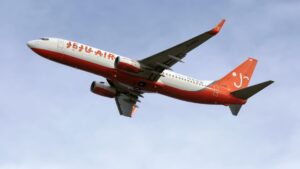What Happened at Muan International Airport? Analyzing the Jeju Air Tragedy
In a tragic event that has stunned the aviation community and the public alike, a Jeju Air Boeing 737-800 executed a belly landing at Muan International Airport in South Korea, resulting in the loss of 179 lives out of the 181 on board. This incident marks South Korea’s most catastrophic air disaster in decades, sparking urgent investigations to uncover its causes.
Immediate Actions Taken
In response to the tragedy, South Korea’s acting President Choi Sang-mok has mandated an emergency inspection of all Boeing 737-800 aircraft in the country. The model involved in this disaster, a Boeing 737-800, is one of the most widely used commercial planes globally, known for its favorable safety record compared to other models, including the recently infamous Boeing 737 Max, which faced scrutiny following two fatal accidents in 2018 and 2019.
According to Cirium, a respected aviation data firm, the Boeing 737-800 constitutes roughly 17% of the entire in-service commercial passenger jet fleet, boasting nearly 4,400 aircraft around the world. On average, these planes are about 13 years old, with the last model delivered approximately five years prior. The aircraft involved in this accident was around 15 years old and previously operated by the low-cost European carrier Ryanair before being handed over to Jeju Air in 2017.
Investigative Challenges Ahead
As investigators delve into the causes behind this devastating incident, skepticism surrounds the potential discovery of any design flaws in this longstanding aircraft model. Richard Aboulafia, Managing Director at AeroDynamic Advisory, remarked, “The idea that they’ll find a design flaw at this point is borderline inconceivable.”
However, as the investigation progresses, several critical questions remain. Why did the landing gear fail to deploy correctly? Even if there was a hydraulic issue, pilots can manually lower the landing gear in emergency situations. Some aviation experts theorize a bird strike could have crippled the engines mid-flight, leaving the crew little time to execute emergency protocols. Jeff Guzzetti, a retired air safety investigator, emphasized that had the aircraft avoided a collision with the hard barrier at the end of the runway, the outcomes could have been significantly less tragic.
International Investigative Collaboration
The National Transportation Safety Board (NTSB) leads the U.S. investigation team, collaborating with Boeing and the Federal Aviation Administration (FAA), as the aircraft was manufactured and certified in the United States. Following international protocols, the country where the incident occurred will oversee the overall investigative process, with South Korea stepping to the forefront in this tragic situation.
Conclusion: A Call for Vigilance
The Jeju Air disaster is a poignant reminder of the complexities and risks involved in air travel. While the Boeing 737-800 has long been lauded for its reliability, this incident underscores the need for continuous assessment and vigilance in aviation safety practices.
At Extreme Investor Network, we are committed to keeping our readers updated on such crucial events, providing insights not only about the airlines involved but also about broader industry trends that can affect travel and investment decisions. Stay informed and engaged as we monitor developments in this heartbreaking tragedy and its implications for the aviation industry.

